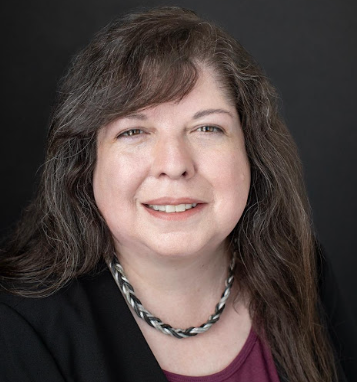
Lourdes B. Avilés
Before becoming Associate Provost at Plymouth State University, Lourdes Avilés was a professor of meteorology for two decades, during which she taught a large number of courses, engaged in various topics of research, and wrote books on atmospheric phenomena.
Before becoming Associate Provost at Plymouth State University, Lourdes Avilés was a professor of meteorology for two decades, during which she taught a large number of courses, engaged in various topics of research, and wrote books on atmospheric phenomena. She was also department chair and director of the Computational, Applied, Mathematical, and Physical Sciences (CAMPS) Academic Unit at Plymouth State University. Dr. Avilés holds Ph.D. and M.S. degrees in Atmospheric Sciences and Physics from the University of Illinois at Urbana-Champaign, and the University of Puerto Rico, Mayagüez Campus, respectively. Dr. Avilés is a trustee for the University Corporation for Atmospheric Research (UCAR), currently the Vice Chair of the board, and has served in a variety of UCAR and AMS committees, including the (formerly named) AMS Board on Women and Minorities, the AMS Board on Higher Education, and chairing the AMS History Committee. She is also currently an academic ambassador for the AMS Committee on Hispanic and Latinx Advancement (CHALA). She was recently chosen as an AMS Fellow. Additionally, she is a trustee of “the home of the worst weather,” the Mount Washington Observatory in the White Mountains of New Hampshire.
Dr. Avilés has done research in tropical meteorology, air quality, and historical meteorology, as well as the interdisciplinary connections of atmospheric phenomena. She wrote an AMS-published book about the science and history of the Great New England Hurricane of 1938 that won the 2013 Atmospheric Science Librarians History Choice award, and for the past few years has been working on an introductory-level textbook about the Optics of the Atmosphere (blue skies, rainbows, halos, auroras, etc.). She has given a large number of presentations for general and technical audiences on these topics. She is happy to chat and write about general meteorology, hurricanes, severe weather safety, the physics of the atmosphere, the science of snowflakes, the science of fall colors, the many optical effects in the atmosphere, and any other atmospheric phenomenon, and enjoys sharing fascinating information with audiences of all levels.
- December 8, 2023
- Snowflakes are Six-Sided (not Four- or Eight-sided), and other Ice Crystal Shape Considerations
-

-
For years, I've been keeping a close eye on representations of snowflakes, always thrilled when I spot the scientifically accurate six-sided ones but cringing when I see four- or eight-sided renditions. Although I usually keep this to myself, there was that one memorable craft show encounter where I had to politely decline a beautiful necklace featuring an eight-sided snowflake pendant, standing my ground for scientific accuracy.
- By Lourdes B. Avilés, Ph.D.
- September 19, 2023
- The 1938 Long Island/New England Hurricane - A Retrospective
-

-
The 1938 Hurricane, a rare and devastating event, struck Long Island and New England on September 21, 1938, causing over 685 fatalities and widespread damage. Join us for a comprehensive discussion on the storm's impact, including a forecast review, and explore how current forecasting capabilities could mitigate similar risks in the future.
- By Lourdes B. Avilés and Louis Uccellini
- July 13, 2023
- Invisible Rainbows: Secrets of the Sky's Most Colorful Phenomena
-

-
Rainbows captivate us with their colorful beauty, formed by sunlight interacting with raindrops. Double rainbows and the dark band between arcs add to the excitement. Primary rainbows feature red on top, while the secondary rainbow displays fainter, inverted colors, and occasionally, pastel-colored supernumeraries enchant our sight. Rainbows hold hidden wonders, even for those familiar with their formation, inspiring us since ancient times.
- By Lourdes B. Avilés, Ph.D.